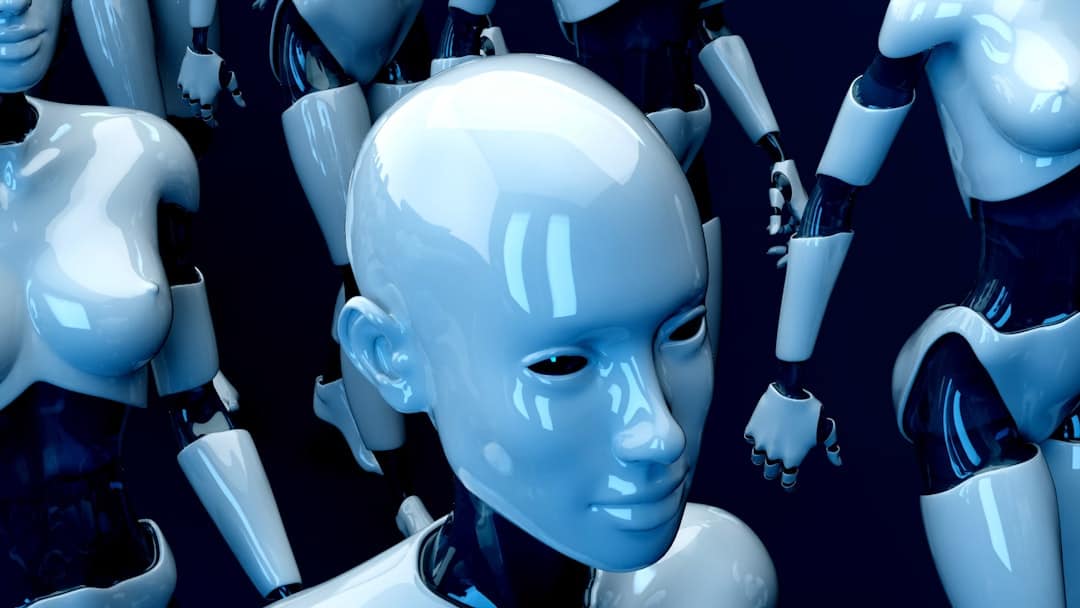Businesses’ interactions with customers are being revolutionized by AI chatbots. These cutting-edge virtual assistants converse like humans and offer automated assistance by utilizing artificial intelligence & natural language processing. Without the need for human intervention, they can comprehend and react to customer inquiries in real-time, potentially enhancing the effectiveness, speed, and general satisfaction of customer service.
Key Takeaways
- AI chatbots are computer programs designed to simulate conversation with human users, providing automated responses to customer inquiries.
- Using AI chatbots for customer service can lead to improved efficiency, cost savings, and 24/7 availability for customers.
- AI chatbots can enhance customer experience by providing quick and accurate responses, personalized interactions, and seamless integration across multiple channels.
- Implementing AI chatbots in customer service requires careful planning, including defining objectives, selecting the right platform, and training the chatbot to handle various scenarios.
- Best practices for using AI chatbots in customer service include setting clear expectations, providing human backup when needed, and continuously monitoring and improving the chatbot’s performance.
By deploying these chatbots on a variety of platforms—such as social media, mobile applications, and websites—businesses can engage with clients through a variety of avenues. They can manage various responsibilities like responding to frequently asked questions, making product recommendations, taking orders, & addressing client issues. By lightening the burden on human customer support teams, this technology frees them up to concentrate on more difficult problems. Because AI chatbots can continuously improve their responses based on past interactions, they are becoming an increasingly valuable tool for companies that strive to provide excellent customer service.
With its potential to drastically alter customer relationship management and support operations, this technology will only grow in the future. Round-the-clock Assistance to Increase Client Contentment. The capability to offer 24/7 support, which enables clients to get help day or night, is one of the main benefits.
Because assistance is always available when needed, this round-the-clock availability can greatly increase customer satisfaction and loyalty. Both scalability and efficiency in responding to client inquiries. Also, AI chatbots can manage a high volume of queries at once, allowing companies to expand their customer support operations without having to pay a substantial amount of extra money. AI chatbots can also save response times & increase the effectiveness of customer service for businesses. Chatbots can expedite the customer service process and guarantee that customers receive assistance promptly by automating repetitive tasks and offering instantaneous responses.
| Metrics | Value |
|---|---|
| Customer Satisfaction | 85% |
| Response Time | 30 seconds |
| Issue Resolution Rate | 90% |
| Cost Savings | 30% |
enhanced business insights and customer experience. Higher levels of client retention and satisfaction as well as favorable word-of-mouth recommendations may result from this. Also, through customer interactions, AI chatbots can gather insightful data that can be utilized to spot trends, enhance goods & services, and tailor the user experience.
All things considered, using AI chatbots for customer service can save costs, increase productivity, and strengthen customer bonds. Through individualized and effective customer support, AI chatbots have the potential to greatly improve the entire customer experience. Based on personal preferences and previous exchanges, these virtual assistants are able to evaluate client inquiries and offer customized answers. AI chatbots can comprehend consumer behavior and preferences by utilizing machine learning algorithms, which enables them to provide pertinent recommendations and solutions. Higher levels of customer satisfaction & loyalty can result from this personalized approach, which can help customers feel appreciated and understood. Also, by responding to queries promptly and accurately, AI chatbots can expedite the customer service process.
This could result in less irritated customers and shorter wait times, which would improve their experience. In order to help consumers accomplish their objectives, chatbots can also assist them with difficult tasks like product selection or problem solving. AI chatbots can make the customer journey easier & more pleasurable by offering proactive support and streamlining the process. Also, AI chatbots can help clients with impairments or language barriers communicate and be more accessible.
These virtual assistants can be configured to support various communication styles and comprehend and respond in a variety of languages. Businesses can reach a larger audience and guarantee that every client gets the assistance they require by practicing inclusivity. All things considered, by offering individualized, effective, and inclusive support, AI chatbots have the potential to completely change the consumer experience. To ensure a successful integration, implementing AI chatbots in customer service requires careful planning and consideration. Setting the goals and use cases for the chatbot, as well as the particular tasks and interactions it will be intended to manage, is the first step in the process. This could involve processing orders, offering product recommendations, answering commonly asked questions automatically, or handling common problems.
Businesses can make sure that the chatbot is in line with their customer service objectives by precisely defining the chatbot’s capabilities. For the purpose of creating and implementing the AI chatbot, businesses must next decide on an appropriate platform or technology. Numerous options are available, such as third-party chatbot platforms, integration with pre-existing customer support software, and custom-built solutions. When selecting a platform, it’s crucial to take things like scalability, integration potential, security, and usability into account.
In order to deliver a flawless customer experience, businesses should also make sure that the chatbot is built with an intuitive user interface and natural language processing capabilities. Following the creation and implementation of the AI chatbot, companies should regularly assess its effectiveness and collect client input to pinpoint areas in need of development. To do this, it might be necessary to examine consumer interactions, monitor important performance indicators like response times and resolution rates, and modify the chatbot’s responses in response to user comments.
Through constant performance optimization, businesses can make sure the chatbot adds value for both the company and its customers. Businesses should adhere to best practices in order to guarantee a positive experience for both customers and employees when utilizing AI chatbots for customer service. One essential procedure is to explain to clients what the chatbot does and what they can expect from it. For more complicated or delicate problems that call for human intervention, this may entail giving details about the kinds of questions the chatbot can answer as well as providing alternate channels. Designing the chatbot’s responses in a conversational, sympathetic tone that complements the brand’s voice and values is another best practice.
Customers may find interacting with the chatbot more comfortable as a result of this more personalized and engaging experience. In order to effectively comprehend and reply to a wide range of customer inquiries, businesses should also make sure that the chatbot has natural language processing capabilities. In order to maintain the accuracy and relevance of the chatbot, businesses should also update its knowledge base & responses on a regular basis. This might entail adding details about new products, responding to frequently asked questions by customers, or improving the chatbot’s conversational skills in response to user input. Updating the chatbot’s knowledge is one way for businesses to guarantee that it keeps helping customers. In order for customer service teams to work with AI chatbots efficiently, businesses should also give them support and training.
This could entail training staff members on how to take advantage of the chatbot’s features, report problems when they arise, and keep an eye on its effectiveness. Businesses can increase the efficacy & efficiency of their customer care operations by encouraging a collaborative approach between chatbots and human agents. Making Certain Brand Alignment and Accuracy. While there are many advantages to using AI chatbots for customer service, one common problem is making sure the chatbot’s responses are accurate and consistent with the company’s values and brand voice. Businesses should spend money training the chatbot with actual customer interactions to overcome this difficulty and then iteratively improving its responses based on user feedback.
Controlling client expectations. Managing customer expectations about the chatbot’s capabilities is another challenge. Consumers may expect different levels of assistance from the chatbot depending on their level of familiarity with AI technology.
To get around this problem, companies should make the purpose & constraints of the chatbot very apparent while offering other avenues for more delicate or in-depth questions. Concerns about data security and privacy. Companies that use AI chatbots for customer service may run into issues with data security and privacy.
Ensuring that the chatbot conforms to data protection regulations and adheres to best practices for managing sensitive customer information is imperative. To protect client data, this can entail putting encryption protocols, access controls, and frequent security audits into place. Steer clear of bias in AI interactions. Businesses should also be aware of any potential biases in AI chatbot interactions that might unfairly affect particular customer groups.
In order to overcome this difficulty, it’s critical to routinely check the chatbot’s responses for prejudice or discriminatory language, audit them, and make any necessary corrections. There are exciting developments in store for AI chatbots in customer service, which will further expand their capabilities and impact on businesses. Using cutting-edge technologies like machine learning and predictive analytics into AI chatbots is one new trend. This will make it possible for chatbots to more precisely predict the needs of customers, tailor interactions based on past information, and proactively provide solutions before clients even ask for them. The development of AI chatbots to facilitate voice-based communication in addition to text-based interactions is another trend for the future.
AI chatbots will be able to have more natural conversations with consumers via voice-enabled devices like phone systems and smart speakers as natural language processing and voice recognition technology advance. Customers will benefit from a more smooth and intuitive experience as a result, and AI chatbots will be able to reach a wider audience through a variety of communication channels. Also, more integration between AI chatbots and other business systems like inventory management, e-commerce, and CRM platforms is anticipated. With the help of this connection, chatbots will be able to access real-time data from numerous sources and offer clients more precise & pertinent assistance. Beyond customer service, AI chatbots can also be used to automate processes like appointment scheduling, payment processing, and survey administration.
AI chatbots will also get better at comprehending context and human emotions during interactions as the technology advances. Better understanding of customer sentiment and more sympathetic responses from chatbots thanks to this emotional intelligence will result in more meaningful and tailored interactions. In conclusion, by offering individualized support, increasing productivity, and improving the general customer experience, AI chatbots have proven to be effective tools for revolutionizing customer service operations. Businesses can fully utilize AI chatbots to drive positive outcomes for customers and the organization by putting best practices into practice & overcoming associated challenges. As we look to the future, AI chatbot trends indicate even more progress that will strengthen their position as providers of first-rate customer service in a variety of industries.
If you’re interested in learning more about the potential impact of AI chatbots on online communities, you should check out this article on resources and further reading on online communities. This article explores the ways in which AI chatbots could enhance the user experience within virtual communities and the potential challenges that may arise. It’s a thought-provoking read for anyone interested in the intersection of AI and online communities.
FAQs
What is an AI chatbot?
An AI chatbot is a computer program that uses artificial intelligence to simulate conversation with human users, typically through text or voice interactions. These chatbots are designed to understand and respond to natural language input from users.
How does an AI chatbot work?
AI chatbots work by using natural language processing (NLP) and machine learning algorithms to understand and interpret user input. They then generate appropriate responses based on the input and the context of the conversation. Some chatbots also use predefined rules and patterns to guide their interactions.
What are the applications of AI chatbots?
AI chatbots have a wide range of applications, including customer service, virtual assistants, healthcare support, e-commerce, and more. They can be used to automate repetitive tasks, provide information and support to users, and improve the overall user experience.
What are the benefits of using AI chatbots?
Some of the benefits of using AI chatbots include 24/7 availability, faster response times, cost savings, improved customer satisfaction, and the ability to handle a large volume of inquiries simultaneously. Chatbots can also help businesses gather valuable insights from user interactions.
What are the limitations of AI chatbots?
AI chatbots may have limitations in understanding complex or ambiguous user input, handling sensitive information, and providing personalized responses. They also require continuous training and updates to improve their performance and accuracy.











Leave a Reply